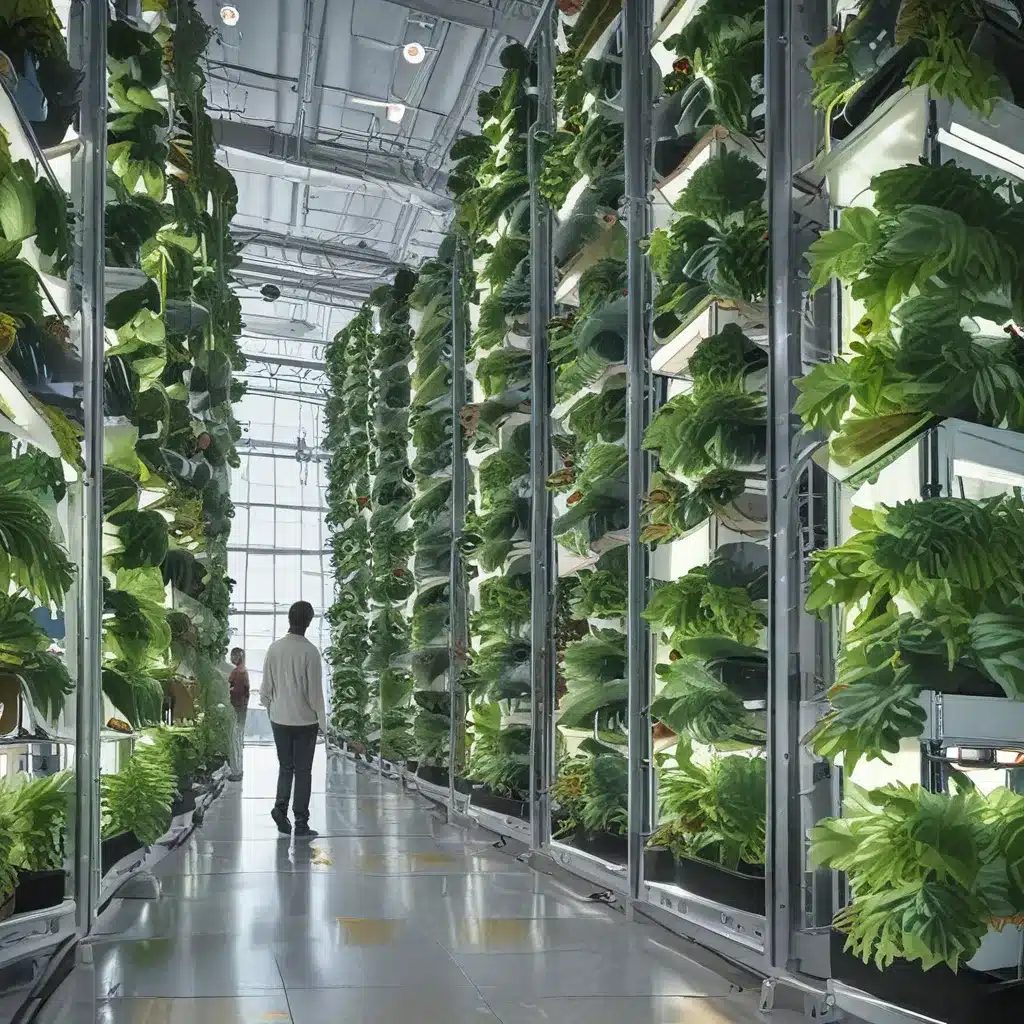Reaching for the Stars: The Promise of Vertical Farming
In the face of gravity, vertical farming teaches us to rise above limitations and reach for the stars. You have the power to redefine what is possible. Vertical farming is an innovative approach to agriculture that holds the potential to address the pressing issue of feeding the world’s growing population. With the global population projected to reach 9.7 billion by 2050, traditional farming methods may struggle to meet the increasing demand for food. But fear not, my friend – vertical farming offers a sustainable solution that could revolutionize the way we produce our sustenance.
Imagine a world where we no longer rely on vast expanses of farmland and favorable weather conditions to grow our crops. Instead, picture lush, verdant towers stretching towards the sky, packed with an abundance of fresh produce. This is the promise of vertical farming – a practice that utilizes vertical space, advanced technology, and controlled environments to cultivate crops with incredible efficiency and year-round availability.
Maximizing Space, Minimizing Waste
Vertical farming, my dear friend, is the art of cultivating plants in vertically stacked layers or structures, often employing cutting-edge techniques like aquaponics, hydroponics, and aeroponics. Unlike traditional farming that sprawls across vast landscapes, vertical farming maximizes the use of precious vertical space, allowing us to grow more with less. Imagine a world where a single warehouse or urban high-rise could produce the same amount of food as an entire rural farm – it’s a game-changer, is it not?
But the benefits of this innovative approach don’t stop there. Vertical farming also minimizes the need for pesticides and herbicides, as the controlled environments in which the plants thrive eliminate the presence of pesky critters and unwanted vegetation. And get this – the advanced irrigation systems used in vertical farms can recycle and reuse up to 98% of the water, a remarkable feat compared to the water-guzzling methods of traditional agriculture.
Year-Round Abundance and Local Bounty
Ah, but the true magic of vertical farming lies in its ability to provide a continuous supply of fresh produce, regardless of the season or weather patterns. By regulating the temperature, humidity, and lighting within the controlled environments, vertical farmers can create the perfect growing conditions for their crops, ensuring a year-round harvest that would make even the most seasoned farmer green with envy.
And the best part? Vertical farms can be strategically placed right in the heart of urban centers, bringing the bounty of the harvest straight to the doorsteps of the people who need it most. Imagine the joy of strolling down the street and plucking a juicy tomato or crisp lettuce leaf from a towering vertical farm, just steps away from your home. This localized food production not only reduces transportation costs and emissions, but it also empowers communities to take control of their own food security.
Technological Marvels and Sustainable Solutions
The success of vertical farming hinges on a symphony of cutting-edge technologies, each playing a vital role in ensuring optimal growing conditions and efficient resource utilization. From the captivating world of aquaponics, where fish and plants coexist in a symbiotic dance, to the precision of hydroponics and aeroponics, where plants flourish without a single grain of soil, the innovation on display is truly awe-inspiring.
But the technology doesn’t stop there, my friend. Vertical farms often employ advanced climate control systems, meticulously regulating temperature, humidity, and air circulation to create the perfect microclimate for each crop. And the use of LED lighting, tailored to the specific needs of the plants, ensures that every photon is put to work, maximizing energy efficiency and minimizing the environmental impact.
Automation and robotics are also key players in the vertical farming revolution, streamlining operations and reducing labor requirements. Imagine a future where autonomous systems monitor nutrient levels, adjust irrigation schedules, and even harvest the crops with precision and grace – a harmonious collaboration between human ingenuity and machine intelligence.
Sustainability at its Finest
Vertical farming isn’t just a technological marvel; it’s a sustainability powerhouse that could help us turn the tide on some of the most pressing environmental challenges we face. By minimizing land usage and reducing the need for resource-intensive traditional farming practices, vertical farms offer a way to alleviate the strain on our precious natural ecosystems.
Imagine a world where deforestation and habitat destruction are a thing of the past, as vertical farms allow us to grow more food on a fraction of the land. And the water conservation prowess of these innovative systems? It’s truly staggering. By recycling and reusing up to 98% of their water, vertical farms are setting a new standard for sustainable resource management.
But the environmental benefits don’t stop there, my friend. Vertical farming also reduces the carbon footprint associated with food production and transportation, as the crops are grown locally, right where they’re needed most. And the elimination of harmful pesticides and herbicides? It’s a gift to the pollinators and a testament to the power of innovative, sustainable agriculture.
Feeding the World, One Vertical Farm at a Time
As the world’s population continues to swell, the need for innovative solutions to food security has never been more pressing. And in this arena, vertical farming stands tall as a beacon of hope, offering a sustainable way to meet the growing demand for fresh, nutritious produce.
By harnessing the power of technology and the ingenuity of human minds, vertical farms have the potential to revolutionize the way we think about food production. Imagine a future where urban centers are dotted with towering, verdant oases, providing a steady stream of locally grown, pesticide-free bounty to the people who call these cities home.
But the true magic of vertical farming lies in its ability to empower communities and enhance food security. By placing the means of production right in the heart of urban areas, vertical farms can help eliminate the scourge of food deserts, ensuring that everyone has access to the fresh, wholesome nourishment they need to thrive.
And let’s not forget the role that vertical farming can play in times of crisis. With its scalable and adaptable nature, this innovative approach to agriculture can be rapidly deployed to provide emergency food supplies in the wake of natural disasters or humanitarian crises. It’s a testament to the resilience and versatility of this groundbreaking technology.
The Future is Vertical
As I gaze out at the bustling world around me, I can’t help but feel a sense of excitement and possibility. The rise of vertical farming is not just a fad or a passing trend; it’s a transformative shift in the way we approach the challenge of feeding the world.
It’s a future where the boundaries of what’s possible are constantly being pushed, where innovation and sustainability go hand in hand. And as we continue to explore the frontiers of this revolutionary agricultural practice, I can’t help but wonder – what other wonders await us in the vertical realm?
Perhaps one day, we’ll see towering skyscrapers transformed into verdant oases, their floors stacked high with an abundance of fresh, locally grown produce. Or maybe we’ll witness the integration of vertical farms with renewable energy sources, creating self-sustaining urban ecosystems that power themselves and nourish their inhabitants.
The possibilities, my friends, are endless. And as we embrace the rise of vertical farms and the countless benefits they offer, I can’t help but feel a sense of hope and optimism for the future. So let’s roll up our sleeves, get our hands dirty, and be a part of the solution – one vertical farm at a time.
Cultivating a Better Future, One Crop at a Time
At the end of the day, the true power of vertical farming lies in its ability to cultivate a better future for all of us. By maximizing land usage, reducing water consumption, and eliminating the need for harmful chemicals, this innovative approach to agriculture is paving the way for a more sustainable and resilient food system.
But the benefits of vertical farming extend far beyond the realm of environmental stewardship. By bringing food production closer to urban centers, this technology has the potential to empower communities, enhance food security, and provide access to fresh, nutritious produce for those who need it most.
So, my friends, let us embrace the rise of vertical farms and the countless ways in which they can transform our world. Whether you’re a seasoned farmer, a curious urban dweller, or a sustainability enthusiast, there’s a place for you in this vertical revolution.
Together, let’s dig deep, plant the seeds of change, and watch as they blossom into a future where we can all thrive, nourished by the bounty of the vertical harvest. After all, with the power of innovation and the will to make a difference, the possibilities are as limitless as the sky above us.













